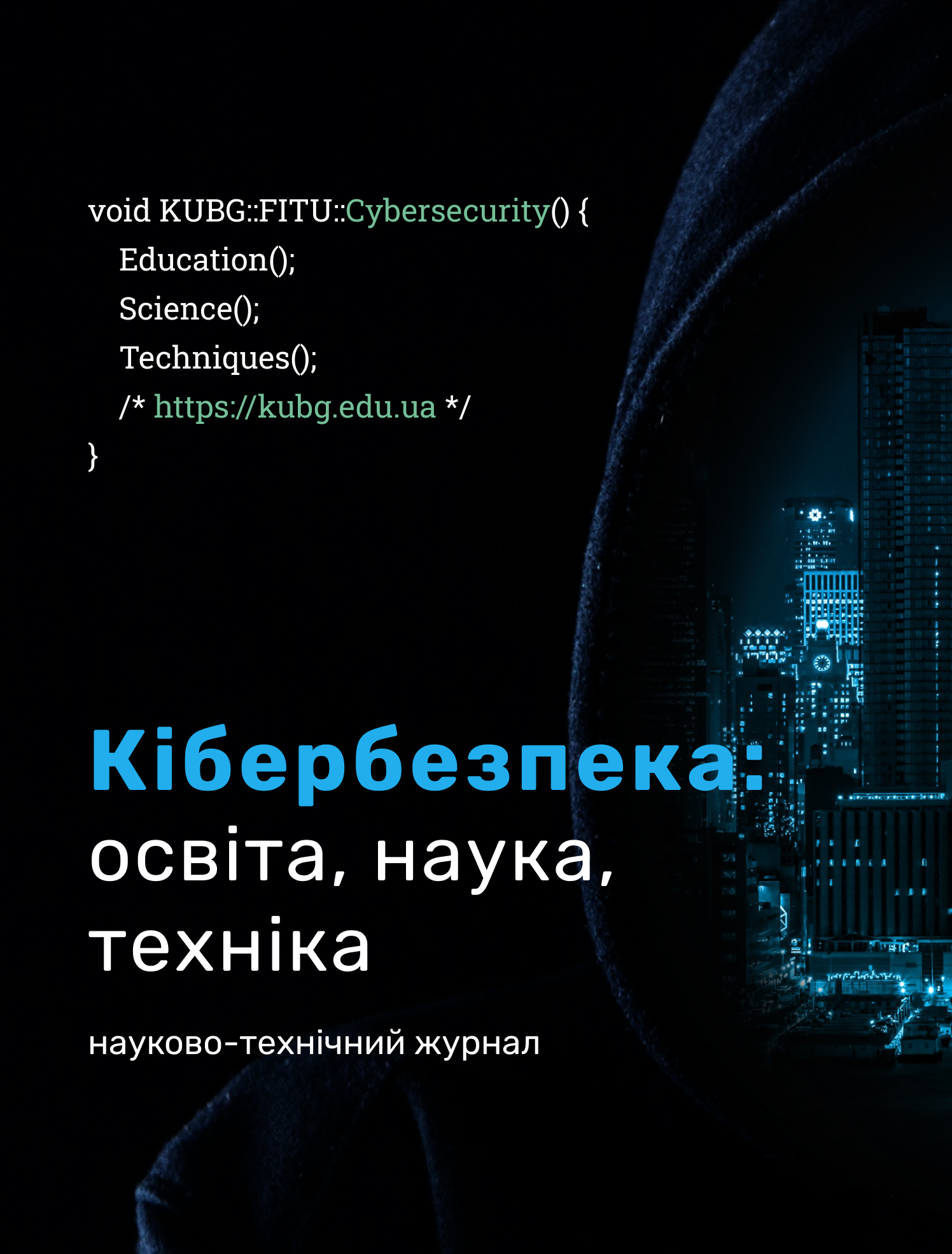INFORMATION TECHNOLOGY FOR DETERMINING THE POLITICAL DIRECTION OF INFORMATION SOURCES TO ENSURE THE INFORMATION SECURITY OF THE STATE DURING CRISIS SITUATIONS
DOI:
https://doi.org/10.28925/2663-4023.2023.20.142152Keywords:
monitoring, social media, Internet, electronic sources of open information, essence extraction, machine learning, artificial intelligence, information technologyAbstract
The information technology of analysis and determination of the political orientation of information sources on the Internet and social networks has been developed and proposed. Based on the application of the machine learning library and fastText text classification, a model was created to determine the political orientation of open information sources. Modules for scanning sources of open information on the Internet and social networks have been developed, which ensure the implementation of the following functions: the formation of databases by collecting information from specified information resources; setting up modules for automatic scanning of information from websites and social networks; full-text search; extracting entities from individual documents; determination of the political orientation of information sources. The practical significance of the obtained results lies in the creation of a working layout of the system for determining the political orientation of electronic sources of information. The system provides extraction of the following entities from text messages: keywords; persons; geographical locations (toponyms); organizations The web interface of the system was developed with the help of the high-level open Python framework for the development of Django web systems. Also, for the convenience of mobile device users with the system of analysis and determination of the political direction of information sources on the Internet, the Telegram bot was developed. Information search functions are available in the system interface by keywords, time period, and separately by each information source (social network). The system makes it possible to examine each source separately, to check the availability of information about it, thereby supplementing the database of open information sources. The system automatically generates a digest with messages and concepts most relevant to users' needs. In addition, users have the opportunity to view the most popular channels of information according to a certain political orientation. The display of the most relevant toponyms on the map has been implemented. Variants of possible application of the system are proposed. Currently, the system is relevant and represents the implementation of information technology for the automated determination of the political direction of electronic sources of information
Downloads
References
Lande, D., Puchkov, O., Subach, I. (2020). Cystema analizu velykykh obsiahiv danykh z pytan kiberbezpeky iz sotsialnykh media. Collection Information Technology and Security, 8(1), 4–18. https://doi.org/10.20535/2411-1031.2020.8.1.217993
Lande, D., Subach, I., Puchkov, O., Soboliev, A. (2021). A Clustering Method for Information Summarization and Modelling a Subject Domain. Information & Security: An International Journal 50, 1, 79-86. https://doi.org/10.11610/isij.5013.
Lande, D., Snarskii, A., Dmytrenko, O., Subach, I. (2020). Relaxation time in complex network. U ARES 2020: The 15th International Conference on Availability, Reliability and Security. ACM. https://doi.org/10.1145/3407023.3409231
Layton, R., Watters, P. A. (2016) Automating open source intelligence: algorithms for OSINT: Elsevier, Syngress. https://doi.org/10.1016/C2014-0-02170-3.
Dharma, E., Gaol, F., Warnars, H., Soewito, B. (2022). The accuracy comparison among word2vec, glove, and fasttext towards convolution neural network (cnn) text classification. Jakarta.
Bojanowski, P., Grave, E., Joulin, A., Mikolov, T. (2016). Bag of Tricks for Efficient Text Classification. https://arxiv.org/abs/1607.01759
Bojanowski, P., Grave, E., Joulin, A., Mikolov, T. (2017). Enriching Word Vectors with Subword Information. https://arxiv.org/abs/1607.04606
Ryan, K. (2016). Facebooks New Open Source Software Can Learn 1 Billion Words in 10 Minutes. https://www.inc.com/kevin-j-ryan/facebook-open-source-fasttext-learns-1-billion-words-in-10-minutes.html
Low, C. (2016). Facebook is open-sourcing its AI bot-building research. https://www.engadget.com/2016-08-18-facebook-open-sourcing-fasttext.html
Mannes, J. (2016). Facebooks Artificial Intelligence Research lab releases open source fastText on GitHub. https://techcrunch.com/2016/08/18/facebooks-artificial-intelligence-research-lab-releases-open-source-fasttext-on-github
Mannes, J. (2017). Facebooks fastText library is now optimized for mobile. https://techcrunch.com/2017/05/02/facebooks-fasttext-library-is-now-optimized-for-mobile
Sabin, D. (2017). Facebook Makes A.I. Program Available in 294 Languages. https://www.inverse.com/article/31075-facebook-machine-learning-language-fasttext
Published
How to Cite
Issue
Section
License
Copyright (c) 2023 Admin Skladannyi; Олександр Пучков, Дмитро Ланде, Ігор Субач, Олександр Рибак

This work is licensed under a Creative Commons Attribution-NonCommercial-ShareAlike 4.0 International License.




